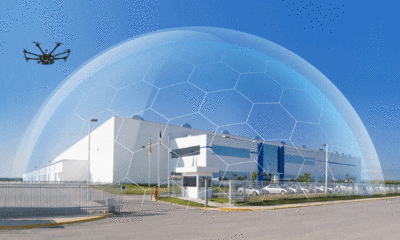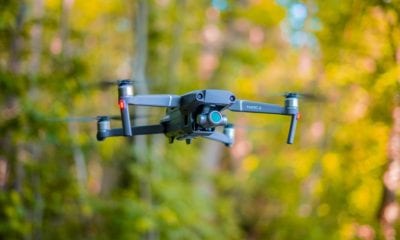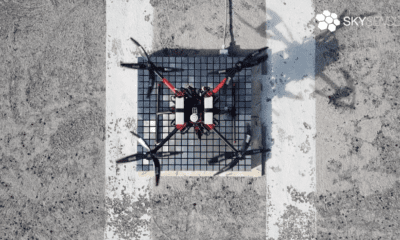
News
Mako Sharks Inspire Better Aerodynamic Drone Design
Mako Sharks Inspire Better Aerodynamic Drone Design
It’s a headline that concocts images of the science fiction horror comedy film series, Sharknado…one could imagine scores of shark-shaped drones invading the skies! While not quite as dramatic as that, it turns out that as the fastest recorded shark on earth, shortfin mako sharks have turned out to be ideal inspiration for researchers looking to improve the aerodynamics of drones. In a paper published this week in the Journal of the Royal Society Interface, evolutionary biologists and engineers at the Harvard John A. Paulson School of Engineering and Applied Sciences (SEAS) joined forces to discover the secret to the mako’s ability to move through water so effortlessly.
Although sharks move through water, the science of aerodynamics can be applied to objects that move through any fluid matter including air. Technology such as computer simulations have been applied for decades to aerodynamic drone research in the past, such as by NASA as presented last year at the American Institute of Aeronautics and Astronautics SciTech Forum. However in this new discovery, researchers were able to uncover what nature has been working on for 400 million years – how shark scales contribute to the efficient movement of sharks through water.

Short Fin Mako Shark
“The skin of sharks is covered by thousands and thousands of small scales, or denticles, which vary in shape and size around the body,” George Lauder, the Henry Bryant Bigelow Professor of Ichthyology and Professor of Biology in the Department of Organismic and Evolutionary Biology, and co-author of the research, explains. “We know a lot about the structure of these denticles — which are very similar to human teeth — but the function has been debated.”
Denticles were previously the focus of research in regards to creating drag, but Lauder and co. decided to explore the other side of the story. “We asked, what if instead of mainly reducing drag, these particular shapes were actually better suited for increasing lift,” said Mehdi Saadat, postdoctoral fellow at Harvard and co-first author of the study.
To dig deeper the team employed a process involving micro-CT scanning, so that they were able to model the denticles in 3D. Using 3D printing technology they were then able to reproduce the shapes on an aerofoil wing. The lift and drag was then tested and measured on the aerofoil structure in order to better understand their possible application to a range of aerial devices such as airplanes, drones and wind turbines. 20 different configurations of denticle sizes, number of rows and positioning of rows were tested within a water flow tank. It was observed that the denticles not only reduced drag but also increased lift to a significant extent.

Environmental scanning electron microscope image of denticles from the shortfin mako shark (a) and of the parametric 3D model (b). These denticles were arranged in a wide range of different configurations on an aerofoil, two examples of which are shown here (c,d ). Credit: Harvard University.
The action behind this increase in lift is a process called vortex generation. Vortex generators are commonly applied to vehicles to alter airflow and make it more aerodynamic – think the spoiler on the back of a Pontiac Firebird.
“These shark-inspired vortex generators achieve lift-to-drag ratio improvements of up to 323 percent compared to an airfoil without vortex generators,” elaborates August Domel, a Ph.D. student at Harvard and co-first author of the paper. “With these proof of concept designs, we’ve demonstrated that these bio-inspired vortex generators have the potential to outperform traditional designs.”
The research team envisions this knowledge will be applicable to a range of vehicles and devices that move through air or water – drones being one of them. “The results open new avenues for improved, bioinspired aerodynamic designs,” said Katia Bertoldi, William and Ami Kuan Danoff Professor of Applied Mechanics at SEAS and co-author of the study.
So how long until we see sharkskin-inspired drones on the market? We will have to wait and see – in the meantime, the intellectual property has been protected by the Harvard Office of Technology Development and commercialization opportunities are being explored.





















